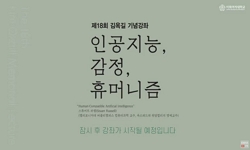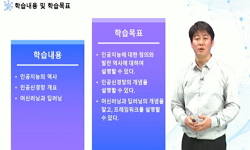영농 폐기물의 증가로 인해, 빠르고 효율적으로 수거할 수 있는 스마트 영농 폐기물 모니터링 시스템 개발이 필요하다. 본 논문에서는 영농 폐기물 분류 시스템을 제안하고 실제 지역 농촌...
http://chineseinput.net/에서 pinyin(병음)방식으로 중국어를 변환할 수 있습니다.
변환된 중국어를 복사하여 사용하시면 됩니다.
- 中文 을 입력하시려면 zhongwen을 입력하시고 space를누르시면됩니다.
- 北京 을 입력하시려면 beijing을 입력하시고 space를 누르시면 됩니다.

Implementation and Performance Evaluation of Farm Waste Image Classification System using CNN-based Transfer Learning Models
한글로보기https://www.riss.kr/link?id=A107293775
- 저자
- 발행기관
- 학술지명
- 권호사항
-
발행연도
2021
-
작성언어
English
- 주제어
-
등재정보
KCI등재
-
자료형태
학술저널
-
수록면
32-41(10쪽)
-
KCI 피인용횟수
0
- DOI식별코드
- 제공처
-
0
상세조회 -
0
다운로드
부가정보
국문 초록 (Abstract)
영농 폐기물의 증가로 인해, 빠르고 효율적으로 수거할 수 있는 스마트 영농 폐기물 모니터링 시스템 개발이 필요하다. 본 논문에서는 영농 폐기물 분류 시스템을 제안하고 실제 지역 농촌에서 직접 수집한 영상을 이용하여 CNN 기반의 전이학습 모델들을 구현하고 비교하였다. 영농 폐기물 영상 분류에 적합한 모델과 학습 조건을 찾기 위해, 3가지의 학습 자료군 구성 조건 (2종 분류, 6종 분류, 6종 하위분류를 가진 2종 분류)을 달리하여 미세 조정된 6개의 사전 훈련 CNN 모델들의 검증 정확도를 비교하였다. 그 결과, ResNet-50 모델의 성능이 모든 학습 조건에서 평균 90.9%의 정확도로 가장 높았고, 폐기물 영상을 6종 분류했을 때보다 2종 분류로 했을 때의 검증 정확도가 10% 더 높았다. 특히, 학습 자료군 구성 방법 중 6종 하위분류를 가진 2종 분류했을 때의 검증 정확도는 2종 분류했을 때와 유사했다. 이를 통해 영농 폐기물은 한 종류만 모여 있지 않을뿐더러 다양한 폐기물들이 한데 섞여 있어서 영농 폐기물의 특정한 세부 종류로 분류하는 것보다 폐기물인지 아닌지를 이진 분류하는 것이 더 효과적임을 확인하였다. 나아가, 제안된 시스템의 동작을 확인하기 위해, 영농 환경 모니터링 서버와 영농 폐기물 영상 분류 서버 사이에 TCP / IP 기반의 통신 환경을 구축하고, 모의실험을 통해 구현한 영농 폐기물 영상 분류 시스템이 스마트 영농 폐기물 모니터링 시스템으로 사용될 가능성을 확인하였다. 본 연구의 결과는 정형화되지 않거나 여러 병변이 혼합된 의료 영상을 분류하는 경우에도 활용될 수 있을 것이다.
다국어 초록 (Multilingual Abstract)
Due to the increase of farm waste in many countries, there’s a need to develop a smart farm waste monitoring system that can collect it promptly and efficiently. In this paper, we proposed, compared the performance of a convolutional neural network ...
Due to the increase of farm waste in many countries, there’s a need to develop a smart farm waste monitoring system that can collect it promptly and efficiently. In this paper, we proposed, compared the performance of a convolutional neural network (CNN) -based transfer learning models and implement a farm waste image classification system, which is crucial component for the monitoring system. To find an appropriate model and labelling methods for farm waste image classification, we compared each validation accuracy of six different pre-trained CNN methods with three types of labelling scheme, using the waste images taken directly from the farming area. As a result, the ResNet-50 model performed best with an accuracy of 90.9% on average. Also, when classified into 2 categories, the accuracy was about 10% higher than that of the 6 categories. Furthermore, when the image was classified into 2 main categories with 6 sub-categories, the validation accuracy was similar to that of the 2 categories. Through these results, it seemed to be more effective to classify with binary labels such as ‘trash’ and ‘non-trash’, rather than with multiple labels of specific categories because farm waste is generated not only by single type of waste but also by various types of mixed waste. And a TCP / IP based communication environment between farm environment monitoring server and farm waste image classification server has been implemented. Experimental results using the system implemented for a smart farm waste monitoring showed that the proposed system can be used for a smart farm waste collection system. Also, the result of this study could be applied to classify medical images of unstructured and/or mixed lesion.
목차 (Table of Contents)
- ABSTRACT
- 요약
- 1. INTRODUCTION
- 2. METHODS
- 3. RESULT AND DISCUSSION
- ABSTRACT
- 요약
- 1. INTRODUCTION
- 2. METHODS
- 3. RESULT AND DISCUSSION
- 4. CONCLUSION
- REFERENCES
참고문헌 (Reference)
1 Karen Simonyan, "Very Deep Convolutional Networks for Large-Scale Image Recognition" 1409-1556, 2015
2 R. Amir, "Taskonomy : Disentangling Task Transfer Learning" 3712-3722, 2018
3 M. Gaurav, "SpotWaste : Smartphone App to Detect Waste Using Deep Learning" 2016
4 G. Ross, "Rich feature hierarchies for accurate object detection and semantic segmentation" 2014
5 H. O. Pedro, and Pinheiro, "Recurrent convolutional neural networks for scene parsing" 2014
6 F. Clement, "Learning hierarchical features for scene labeling" 35 (35): 1915-1929, 2013
7 Alex Krizhevsky, "ImageNet Classification with Deep Convolutional Neural Networks" 25 : 1097-1105, 2012
8 Y. Jason, "How transferable are features in deep neural networks?" 27 : 2014
9 S. Christian, "Going deeper with convolutions" 2015
10 O. Wanli, "Deepid-net:multi-stage and deformable deep convolutional neural networks for object detection" 2015
1 Karen Simonyan, "Very Deep Convolutional Networks for Large-Scale Image Recognition" 1409-1556, 2015
2 R. Amir, "Taskonomy : Disentangling Task Transfer Learning" 3712-3722, 2018
3 M. Gaurav, "SpotWaste : Smartphone App to Detect Waste Using Deep Learning" 2016
4 G. Ross, "Rich feature hierarchies for accurate object detection and semantic segmentation" 2014
5 H. O. Pedro, and Pinheiro, "Recurrent convolutional neural networks for scene parsing" 2014
6 F. Clement, "Learning hierarchical features for scene labeling" 35 (35): 1915-1929, 2013
7 Alex Krizhevsky, "ImageNet Classification with Deep Convolutional Neural Networks" 25 : 1097-1105, 2012
8 Y. Jason, "How transferable are features in deep neural networks?" 27 : 2014
9 S. Christian, "Going deeper with convolutions" 2015
10 O. Wanli, "Deepid-net:multi-stage and deformable deep convolutional neural networks for object detection" 2015
11 H. Kaiming, "Deep Residual Learning for Image Recognition" 770-778, 2016
12 H. Kaiming, "Deep Residual Learning for Image Recognition" 770-778, 2016
13 J. P. Sinno, "A Survey on Transfer Learning" 22 (22): 1345-1359, 2010
동일학술지(권/호) 다른 논문
-
입유각기의 전환이 가능한 기계식 유압 대퇴의지 개발 및 평가
- 한국재활복지공학회
- 박진국(J. K. Park)
- 2021
- KCI등재
-
보조공학평가도구(KAAT)를 활용한 보조공학기기 및 서비스 만족도에 관한 연구: 전라북도보조기기센터 서비스를 중심으로
- 한국재활복지공학회
- 신현욱(H. U. Shin)
- 2021
- KCI등재
-
- 한국재활복지공학회
- 김현철(H. C. Kim)
- 2021
- KCI등재
-
상지 재활 로봇 응용을 위한 리니어 액추에이터 기반의 저항모드 시스템 설계
- 한국재활복지공학회
- 설재황(J. H. Seol)
- 2021
- KCI등재
분석정보
인용정보 인용지수 설명보기
학술지 이력
| 연월일 | 이력구분 | 이력상세 | 등재구분 |
|---|---|---|---|
| 2028 | 평가예정 | 재인증평가 신청대상 (재인증) | |
| 2022-01-01 | 평가 | 등재학술지 유지 (재인증) |  |
| 2019-01-01 | 평가 | 등재학술지 유지 (계속평가) |  |
| 2016-01-01 | 평가 | 등재학술지 선정 (계속평가) |  |
| 2015-01-01 | 평가 | 등재후보학술지 유지 (계속평가) |  |
| 2013-01-01 | 평가 | 등재후보 1차 FAIL (등재후보1차) |  |
| 2013-01-01 | 평가 | 등재후보 1차 FAIL (등재후보1차) |  |
| 2012-01-01 | 평가 | 등재후보학술지 유지 (기타) |  |
| 2010-01-01 | 평가 | 등재후보학술지 선정 (신규평가) |  |
학술지 인용정보
| 기준연도 | WOS-KCI 통합IF(2년) | KCIF(2년) | KCIF(3년) |
|---|---|---|---|
| 2016 | 0.27 | 0.27 | 0.32 |
| KCIF(4년) | KCIF(5년) | 중심성지수(3년) | 즉시성지수 |
| 0.38 | 0.36 | 0.566 | 0.16 |





 DBpia
DBpia






